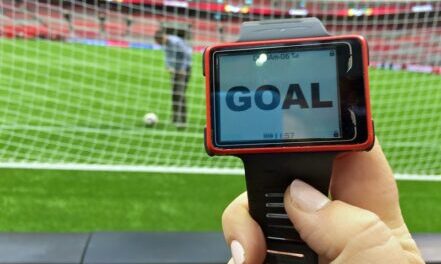
Hawk-Eye
Referees and umpires, we all should agree, have a very difficult job. The assistance of digital camera technology entered into the fray, initially in cricket, in 2001. The pioneer was ‘Hawk-Eye‘, the vision of Dr. Paul Martin Hawkins, OBE (1974-) from Hampshire and colleague David Sherry (1967?-). Hawkins went on to develop the idea in a joint venture with a TV production company and set up Hawk-Eye Innovations Ltd., now owned by Sony.
The patent focused on its uses in cricket but also suggested a more general application to any ball game; and so it has proved. It described a video processing system having at least four (now six minimum) cameras placed high in the stands feeding signals to a data store. This creates a 3D representation of the ball’s trajectory, thereby enabling a prediction of whether, for example, it would hit the stumps in a leg-before-wicket situation.
Tennis has enthusiastically adopted ‘Hawk-Eye’, as have around 20 different sports (involving moving objects of some description) in over 500 venues. They include football, which, after a cautious late start, now sees it as indispensable in supporting the referee. Hawk-Eye’s virtual reality on-screen graphics have also revolutionised sports commentary and training, since frame-by-frame analysis can be made.
(Top image of a Hawk-Eye wearable: Rebecca Bollwitt at Flickr.com / CC BY-NC 2.0)
